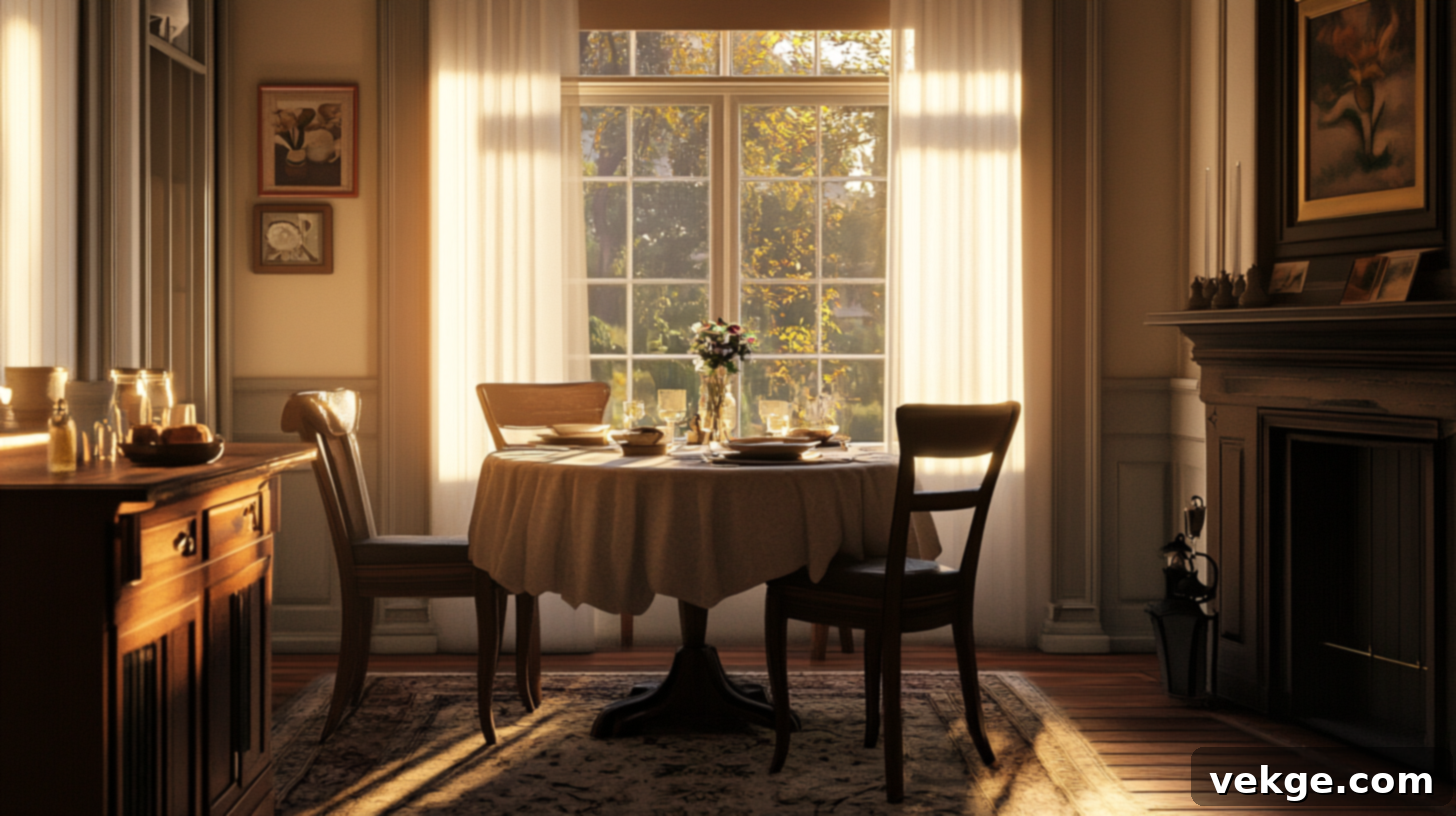24 Inspiring Dining Room Makeover Ideas to Transform Your Space on Any Budget
The dining room is more than just a place to eat; it’s a central hub for connection. It’s where cherished family meals are shared, birthdays are celebrated, and deep conversations unfold over good food and company. Over time, however, even the most beloved dining spaces can begin to feel a little uninspired, plain, or simply outdated, losing some of their original charm and functionality.
But here’s some fantastic news: achieving a refreshed and revitalized dining room doesn’t require a complete overhaul or a hefty investment. You absolutely don’t need to tear everything down or spend a fortune to breathe new life into this essential area of your home.
In this comprehensive guide, we’ll explore 24 simple yet impactful makeover ideas that are genuinely achievable for anyone. These practical tips are designed to be easy to implement, versatile enough for almost any room size or style, and focused on helping you create a space you’ll truly love. You’ll discover clever ways to repurpose items you already own, learn how small updates can create a big impact, and find inspiration to inject your unique personality without the stress and expense of a full-scale renovation.
If your dining room is yearning for a little revitalization, you’ve come to the perfect place. Let’s embark on this transformative journey together, exploring each idea step-by-step to help you craft a dining space that’s both beautiful and functional.
Planning Your Dining Room Makeover for Success
Before you dive into moving furniture or making any purchases, it’s wise to take a moment and thoughtfully plan your approach. This crucial first step ensures your efforts are intentional and effective. Begin by asking yourself what you truly hope to achieve with this makeover. Do you envision a cozier atmosphere for intimate family dinners? Are you aiming for a more modern and streamlined aesthetic? Or perhaps your primary goal is to enhance its functionality for everyday use, making it more practical and inviting?
Once you’ve clearly defined your objective, the next step is to set a realistic budget that aligns with your financial comfort. Be comprehensive; try to account for all potential expenses, including paint, new furniture pieces, lighting fixtures, decorative accents, and even smaller items like placemats or candles. Planning ahead in this manner is invaluable, as it helps prevent overspending and ensures you don’t overlook any critical elements that could complete your vision. A well-structured budget provides clarity and confidence throughout the process.
Take a critical look at your current dining room. Identify elements you genuinely appreciate and want to retain. Perhaps your dining table remains a solid piece that functions perfectly, but your chairs are worn and ready for an upgrade. Or maybe the existing layout simply needs a minor tweak to feel more open and spacious. Understanding what you already possess can lead to significant cost savings and make your overall plan much clearer and more focused. A little thoughtful planning now will ensure that every change you implement feels deliberate, purposeful, and contributes effectively to your desired outcome.
24 Inspiring Dining Room Makeover Ideas
You don’t need an unlimited budget or a complete structural renovation to make a significant difference. The following ideas are designed to be accessible, effective in almost any size room, and allow you to infuse your personal style without unnecessary stress or financial strain.
1. Paint It Bold or Go Neutral for Instant Impact
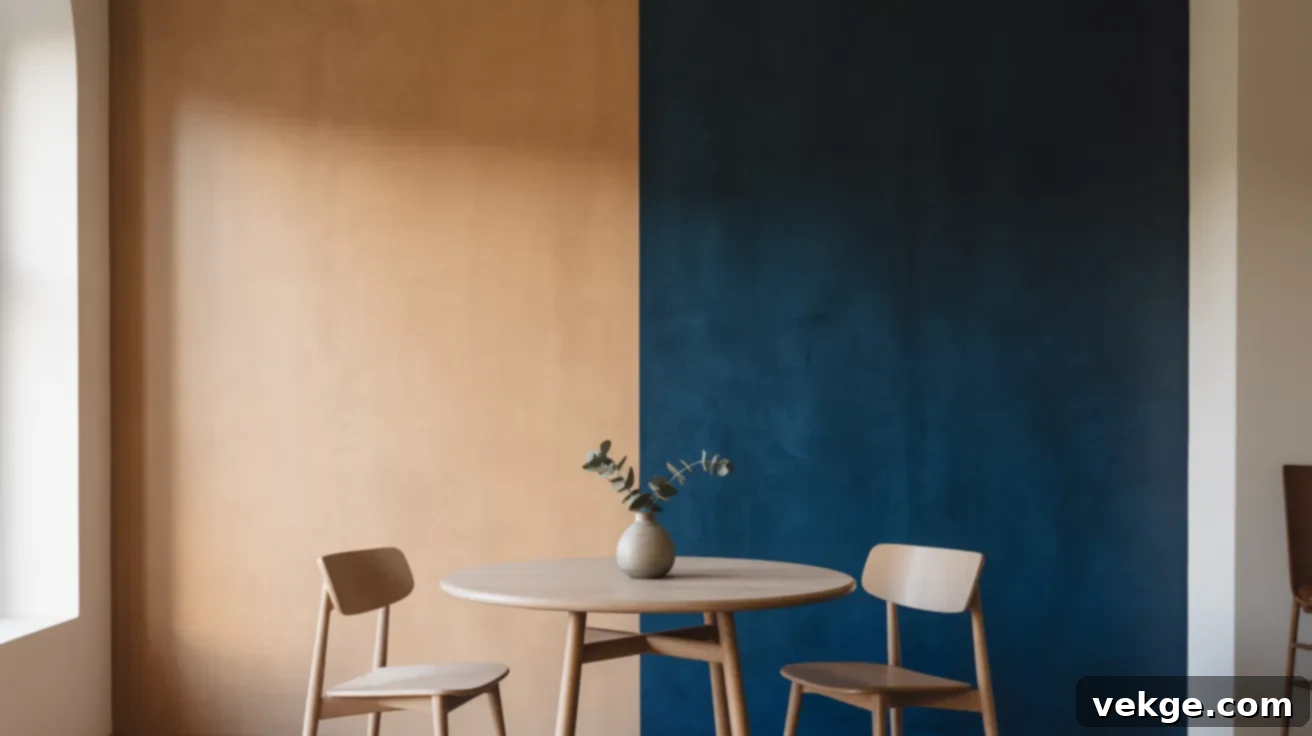
One of the quickest, most impactful, and most budget-friendly ways to transform a dining room is with a fresh coat of paint. A soft, neutral shade like beige, cream, or a subtle gray can instantly make the space feel calm, clean, and significantly more spacious. These timeless hues also serve as an excellent backdrop for any decor style you choose. If you’re seeking to infuse more energy, drama, or depth, consider a bold statement color such as a rich navy blue, an elegant emerald green, or even a sophisticated charcoal gray or black on an accent wall. Paint is remarkably versatile, easy to update when your tastes change, and sets the foundational mood for everything else in the room.
2. Add a Feature Wall with Stylish Wallpaper
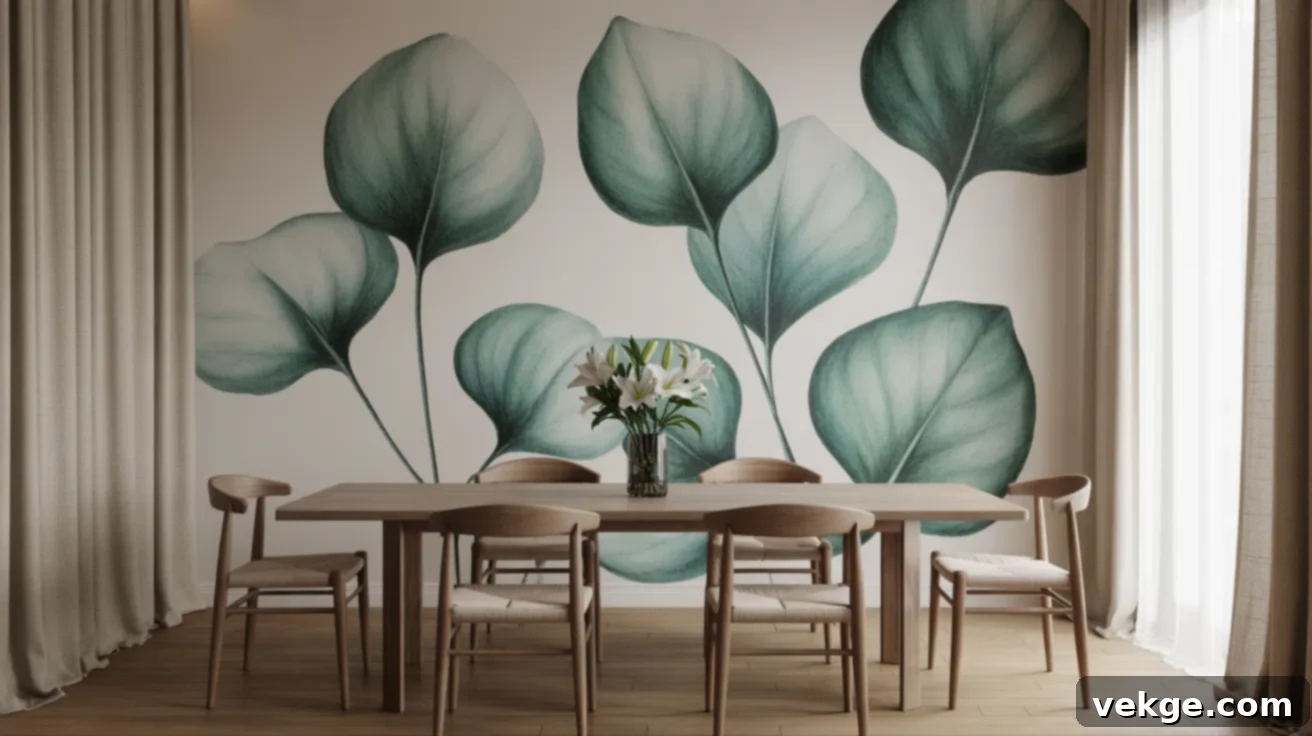
Wallpaper offers a fantastic opportunity to express your personality and add distinctive visual interest. You can opt for subtle, textural patterns to create a relaxed and inviting atmosphere, or go for bold, graphic prints to make a strong design statement and truly make one wall pop. For those who are renting or prefer a less permanent commitment, peel-and-stick wallpaper options are incredibly convenient and removable. Focusing on just one feature wall can dramatically alter the entire feel of the space, injecting character and style without the need to redecorate the rest of the room.
3. Try Wainscoting or Elegant Wall Panels

Installing wainscoting or decorative wall panels can instantly elevate your dining room, giving it a more refined and finished appearance. These architectural details are excellent for adding texture, breaking up monotonous plain walls, and introducing a touch of traditional or contemporary sophistication. You can paint them to seamlessly match the upper wall color for a cohesive look, or choose a contrasting shade to create visual separation and depth. Beyond aesthetics, wainscoting is also remarkably durable, making it a smart choice for active households with young children where walls might frequently encounter bumps or scuffs.
4. Hang a Chandelier or Pendant Light for Focus
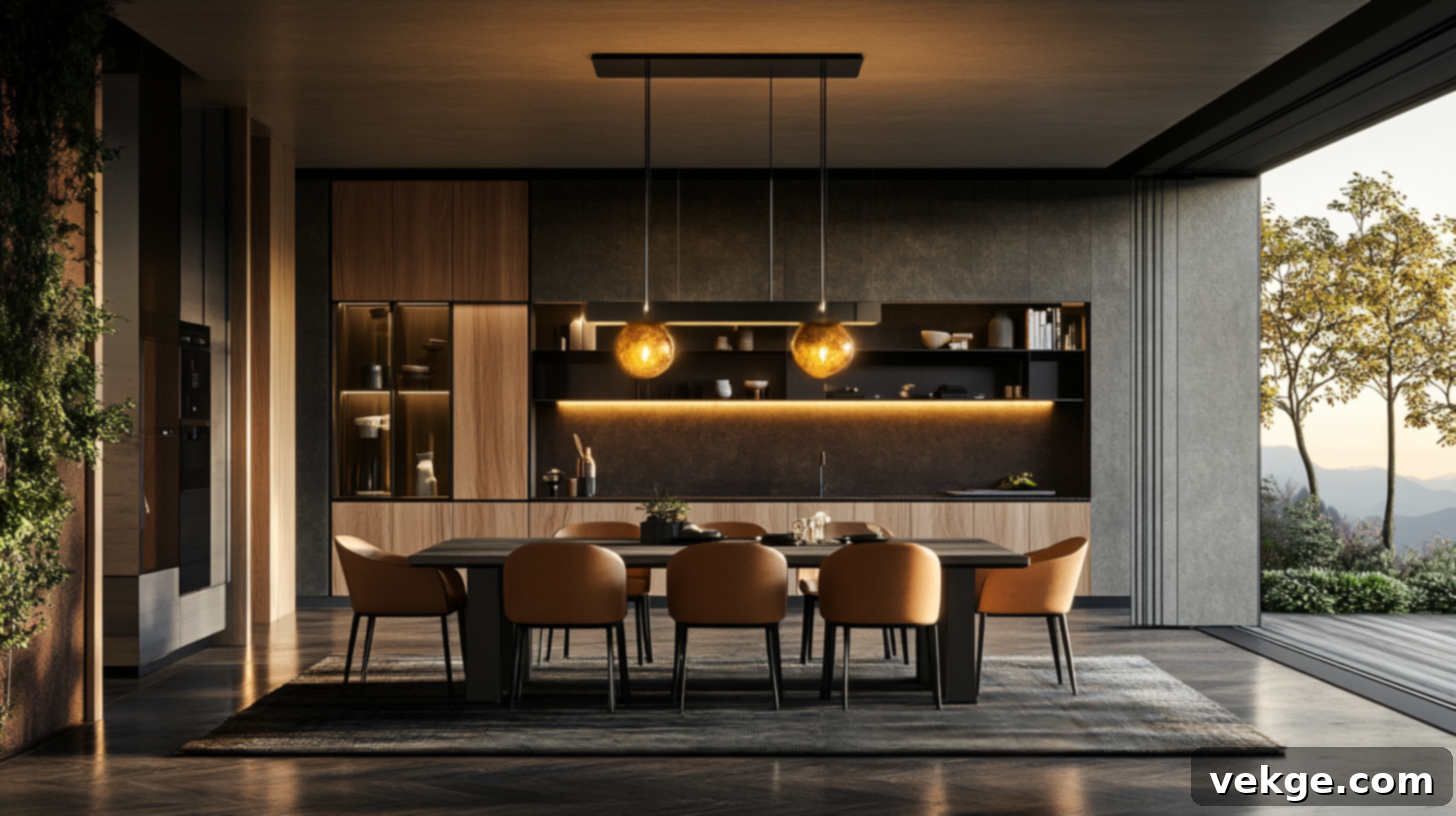
Lighting possesses an incredible power to completely shift the mood and character of a room. A carefully selected hanging chandelier or a modern pendant light positioned above your dining table not only provides essential illumination but also serves as a stylish focal point. When choosing, ensure its size is proportionate to both your table and the room’s dimensions to achieve balance. You don’t necessarily need an overly ornate fixture; even sleek, simple designs can add significant charm, draw the eye, and make the entire space feel more intentionally designed and pulled together.
5. Add Wall Sconces for Ambient Glow
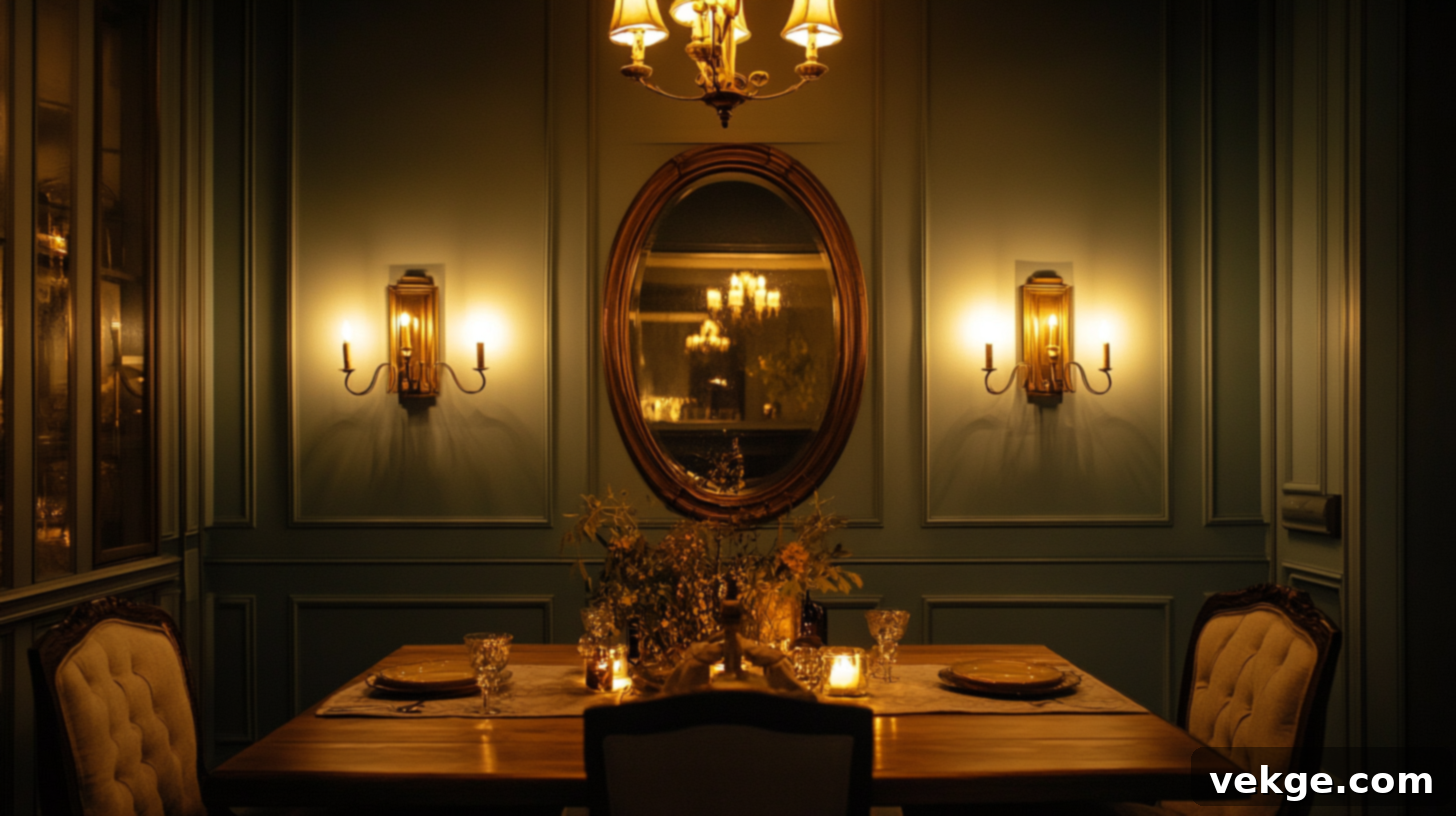
Wall sconces are an excellent addition for creating layers of light and enhancing the room’s ambiance without consuming valuable table or floor space. They are particularly effective at casting a soft, inviting glow that makes the room feel exceptionally cozy during evening meals and intimate gatherings. Consider placing them symmetrically on either side of a large mirror, a buffet cabinet, or a significant piece of artwork. Many contemporary sconce designs are available in easy-to-install plug-in styles, which means you can enjoy their benefits without the need to hire an electrician for complicated wiring.
6. Mix in Lamps for a Cozy, Layered Glow
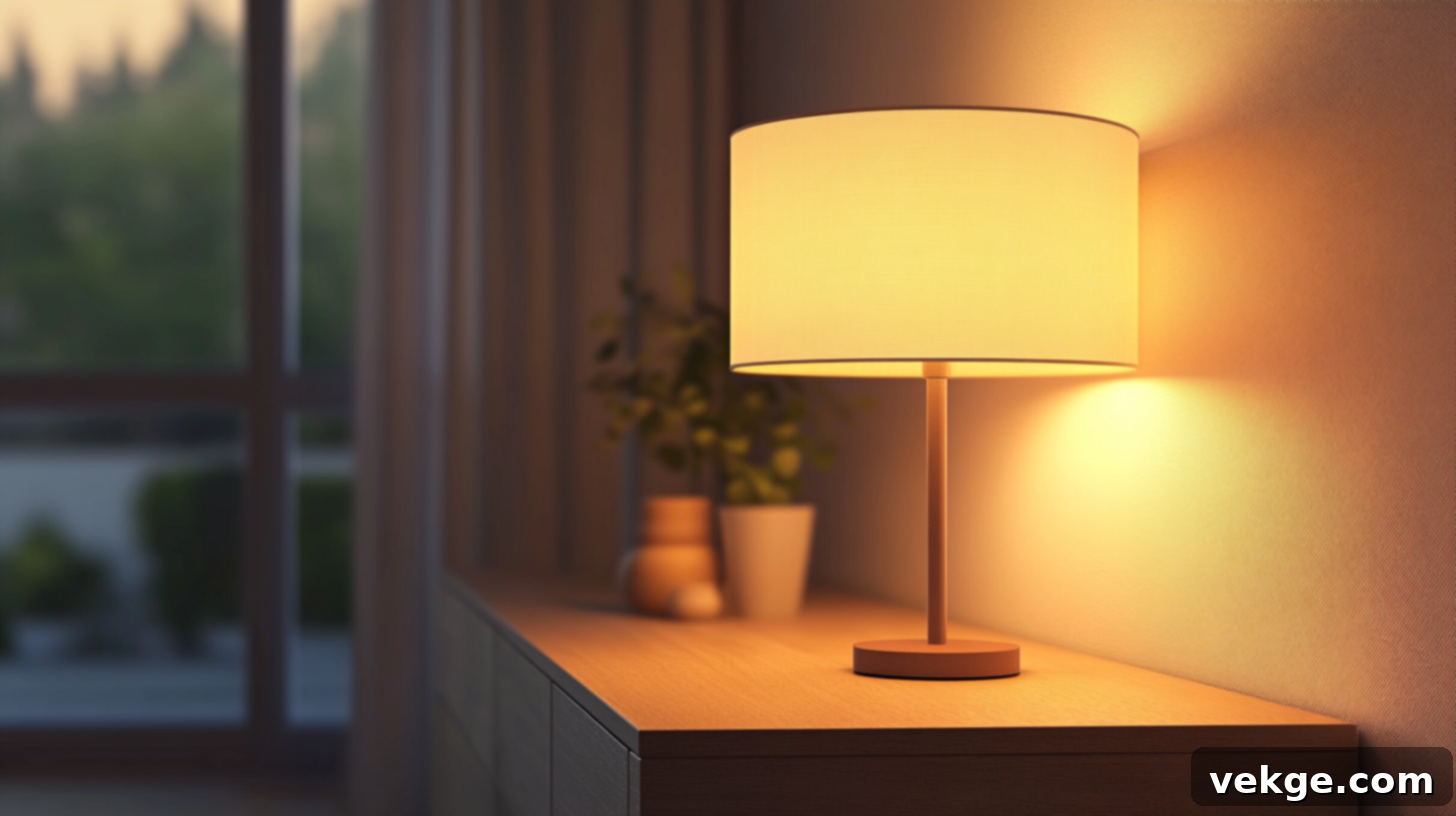
Incorporating table lamps or floor lamps introduces a softer, warmer layer of light that instantly makes the dining room feel more relaxed and lived-in. Experiment with placing a stylish table lamp on a sideboard, a console table, or a buffet, or tuck a slender floor lamp into an empty corner. Lamps are also instrumental in balancing the brightness of overhead lighting, preventing the room from feeling stark or overly lit. Opt for a simple, elegant base and a light-colored shade to ensure a clean, flexible look that complements various decor styles.
7. Swap in a Round Table for Better Flow and Conversation
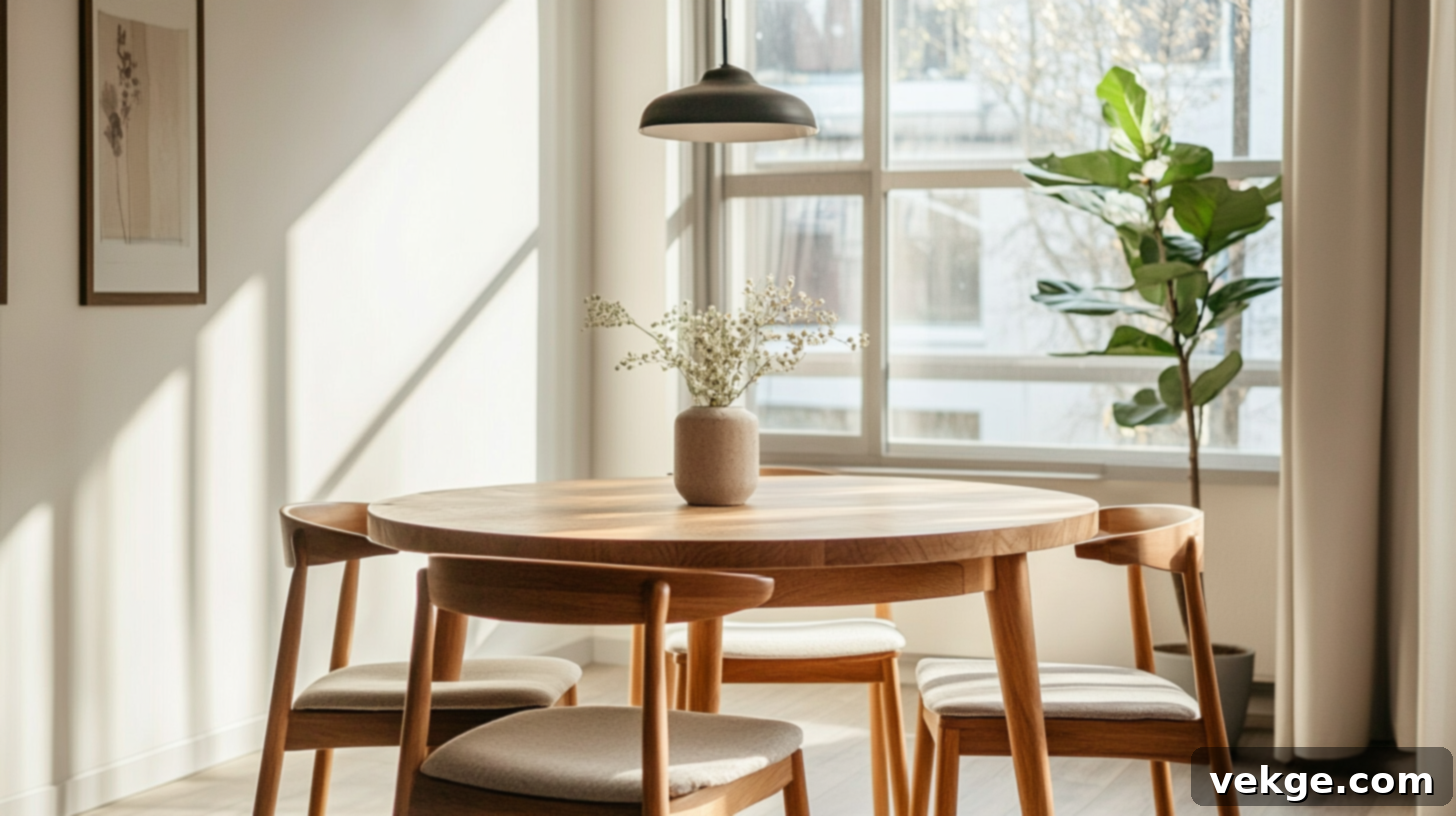
If your dining room feels cramped or has awkward angles, a round dining table can be a revelation. Round tables are excellent for optimizing space in tighter areas and promoting smoother traffic flow around the room due to their lack of sharp corners. Furthermore, they naturally encourage more inclusive group conversation, as everyone is equally visible and engaged. If your current rectangular table feels too bulky, switching to a round design can dramatically open up the space. Look for extendable styles if you occasionally need extra seating for guests but prefer a compact footprint for daily use.
8. Use Mismatched Chairs for Unique Character
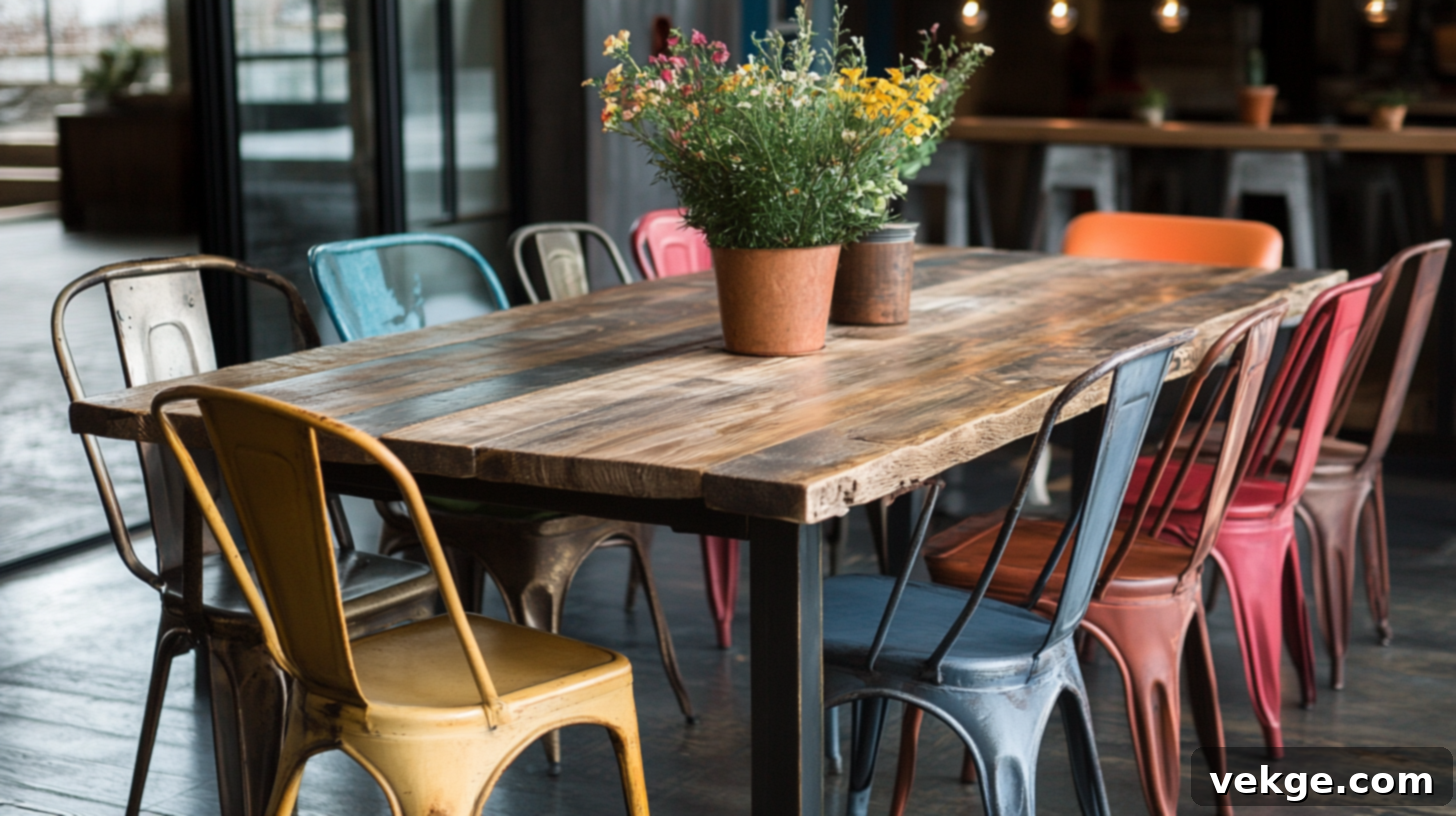
Breaking away from the expectation that everything must perfectly match can lead to a more interesting and personalized dining space. Incorporating different styles of chairs around your dining table is a fantastic way to add visual intrigue and character. You can experiment by mixing various wood tones, different materials (like wood with metal or upholstery), or distinct chair shapes. Another creative approach is to combine cherished antique chairs with newer pieces, or even repaint a few existing chairs in a coordinating color to tie them together. It’s an effective strategy to utilize what you already own while giving your dining room a fresh, eclectic twist.
9. Try a Bench on One Side for Casual Seating
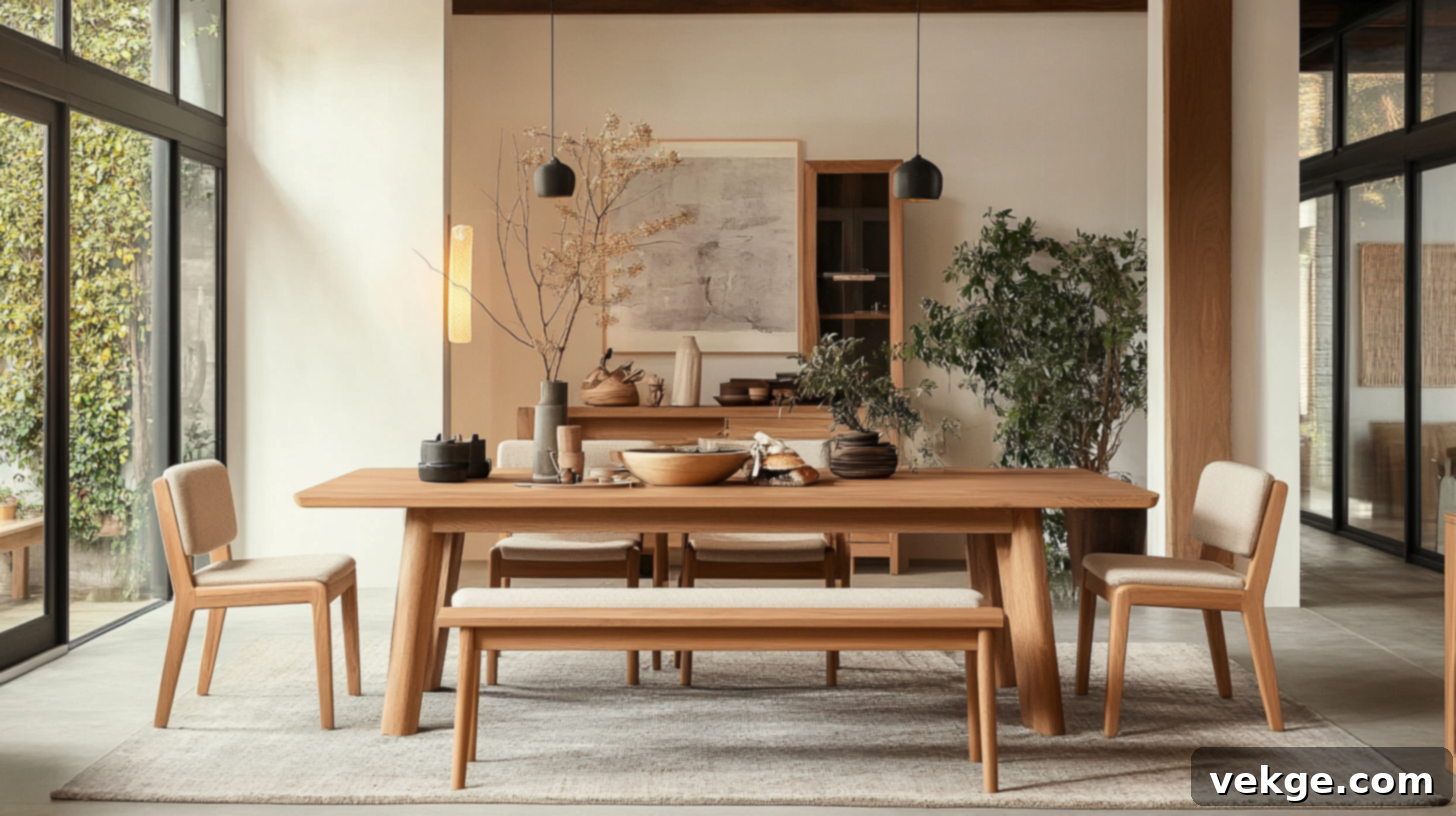
A dining bench is a clever space-saving solution and an excellent way to introduce a more relaxed, contemporary vibe to your dining room. When not in use, a bench can be neatly tucked under the table, freeing up valuable floor space. It also offers the practical advantage of seating more people in a smaller footprint compared to individual chairs. Choose a padded, upholstered bench for added comfort and a touch of softness, or a sleek wooden one for a clean, minimalist aesthetic. Pairing a bench on one side with traditional chairs on the other creates a dynamic and appealing mix of seating options.
10. Add a Rug That Grounds the Dining Area
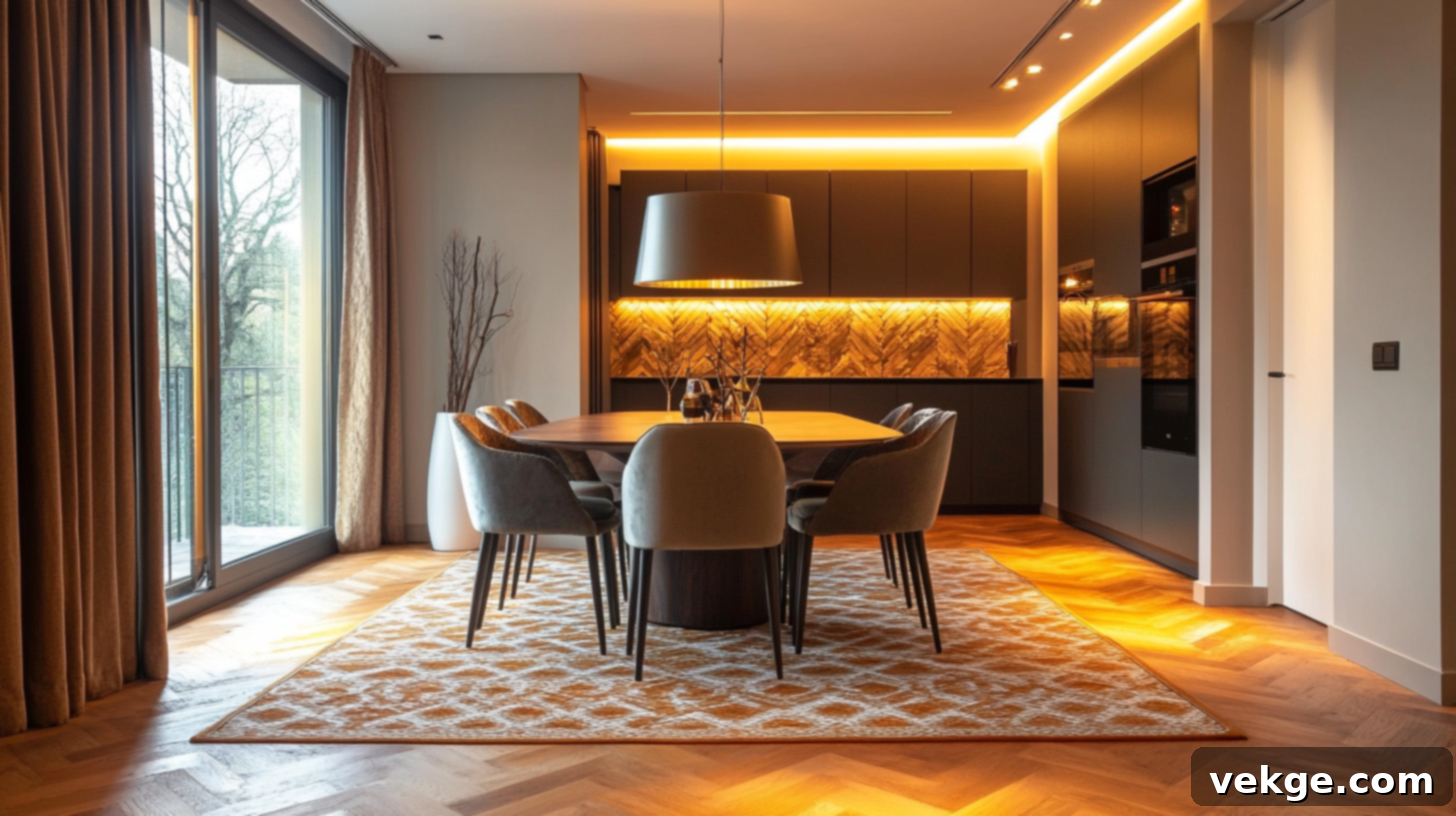
A well-chosen area rug plays a crucial role in defining your dining area, especially in open-plan layouts or rooms with hard flooring surfaces. It immediately adds warmth, texture, and a sense of comfort underfoot. The key is to select a rug that is sufficiently large; ensure it extends beyond the chairs when they are pulled out, allowing them to slide in and out smoothly without catching on the rug’s edge. Opt for materials that are durable and easy to clean, given the dining room’s function. Patterns can be particularly advantageous, as they cleverly help to camouflage crumbs, spills, and everyday stains, making it ideal for a dining space used daily.
11. Use Mirrors to Amplify Light and Depth

A strategically placed mirror can instantly brighten and expand the perception of your dining room. By reflecting natural light from windows or artificial light sources, mirrors make the space feel significantly larger and more open. Consider hanging a generously sized mirror on a wall directly opposite a window to maximize its light-reflecting benefits. They also work beautifully above a buffet or sideboard, creating an elegant focal point. Choose a simple, understated frame that harmonizes with your existing decor, and carefully consider placement to avoid reflecting clutter or busy, less attractive corners of the room.
12. Hang Art That Truly Reflects Your Style

Art is a powerful tool for injecting personality, adding visual interest, and making your dining room feel more inviting and uniquely yours. Select pieces that resonate deeply with you, whether they are cherished family photographs, evocative travel prints, abstract paintings, or handmade works by local artists. Don’t feel pressured to chase fleeting trends; instead, prioritize colors, shapes, and subjects that you genuinely enjoy and that bring you joy. When hanging, aim for eye level, ensuring that the center of the artwork or gallery grouping is comfortably visible and enjoyable when seated at the table.
13. Add a Tall Plant in the Corner for Life
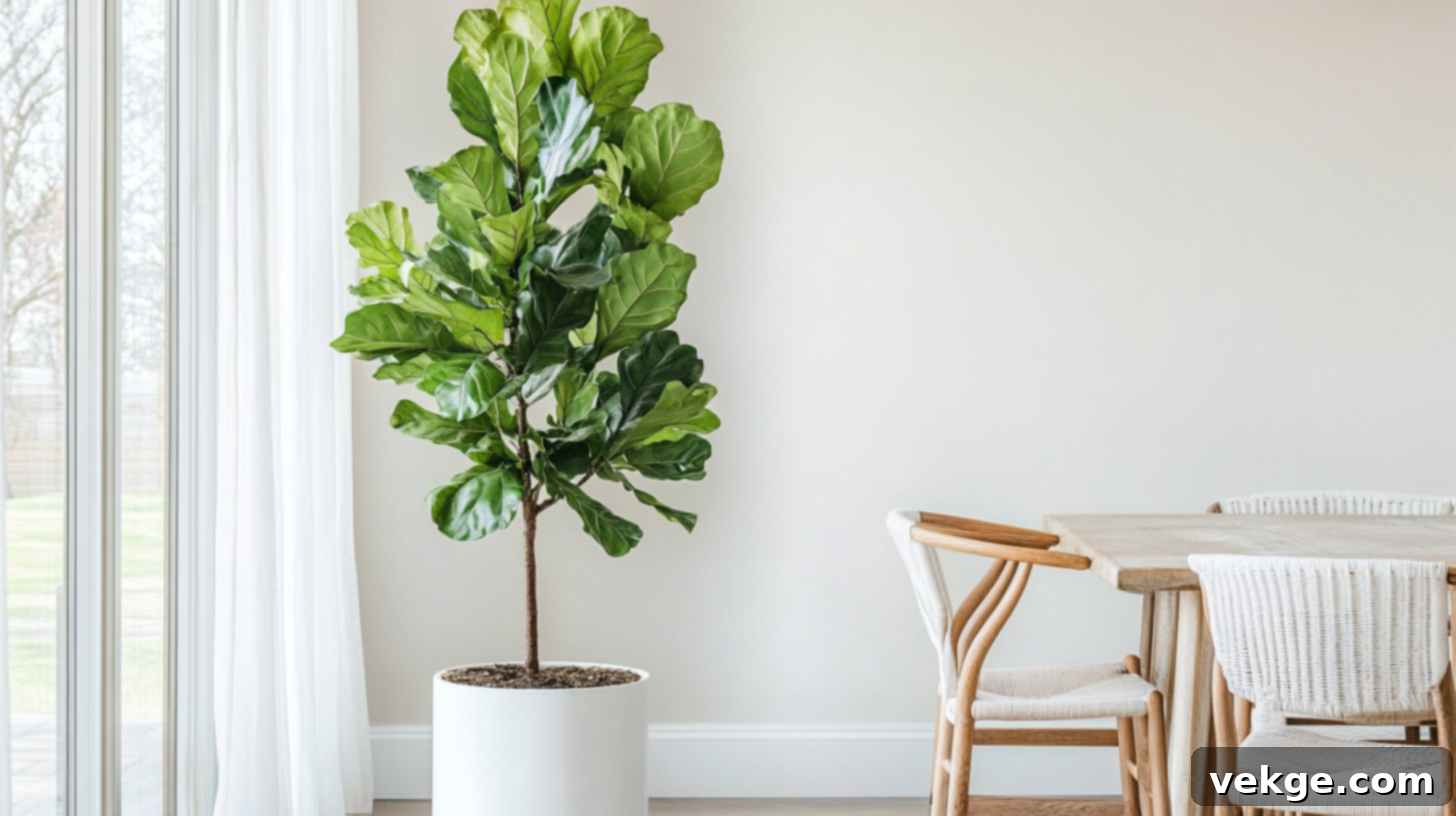
Bringing natural elements into your dining room can instantly soften the space and introduce a vibrant touch of life. A tall, stately plant such as a Fiddle Leaf Fig, a Snake Plant, or a towering bird of paradise is perfect for filling empty corners and adding vertical interest. If your room lacks sufficient natural sunlight or you have a busy schedule, consider low-maintenance plant varieties like a ZZ Plant or invest in a high-quality faux plant that offers the same aesthetic benefits without the care requirements. Pair it with an attractive, simple pot and allow it to stand as a singular statement, or complement it with smaller plants on nearby shelves or windowsills.
14. Try a Bowl of Fresh Fruit or Natural Branches

Sometimes, the most straightforward decor elements create the greatest impact. A beautiful, clear glass bowl filled with vibrant fresh fruit—lemons, apples, oranges, or seasonal selections—can instantly brighten your table with a pop of natural color and a refreshing scent. Alternatively, consider arranging trimmed branches, such as eucalyptus, willow, or cherry blossoms, in a tall, elegant vase for a chic, organic, and minimalist look. These quick and adaptable centerpieces are incredibly easy to switch out with the seasons or your mood, requiring minimal effort to keep them looking fresh and appealing.
15. Use Woven or Wood Accents for Warmth
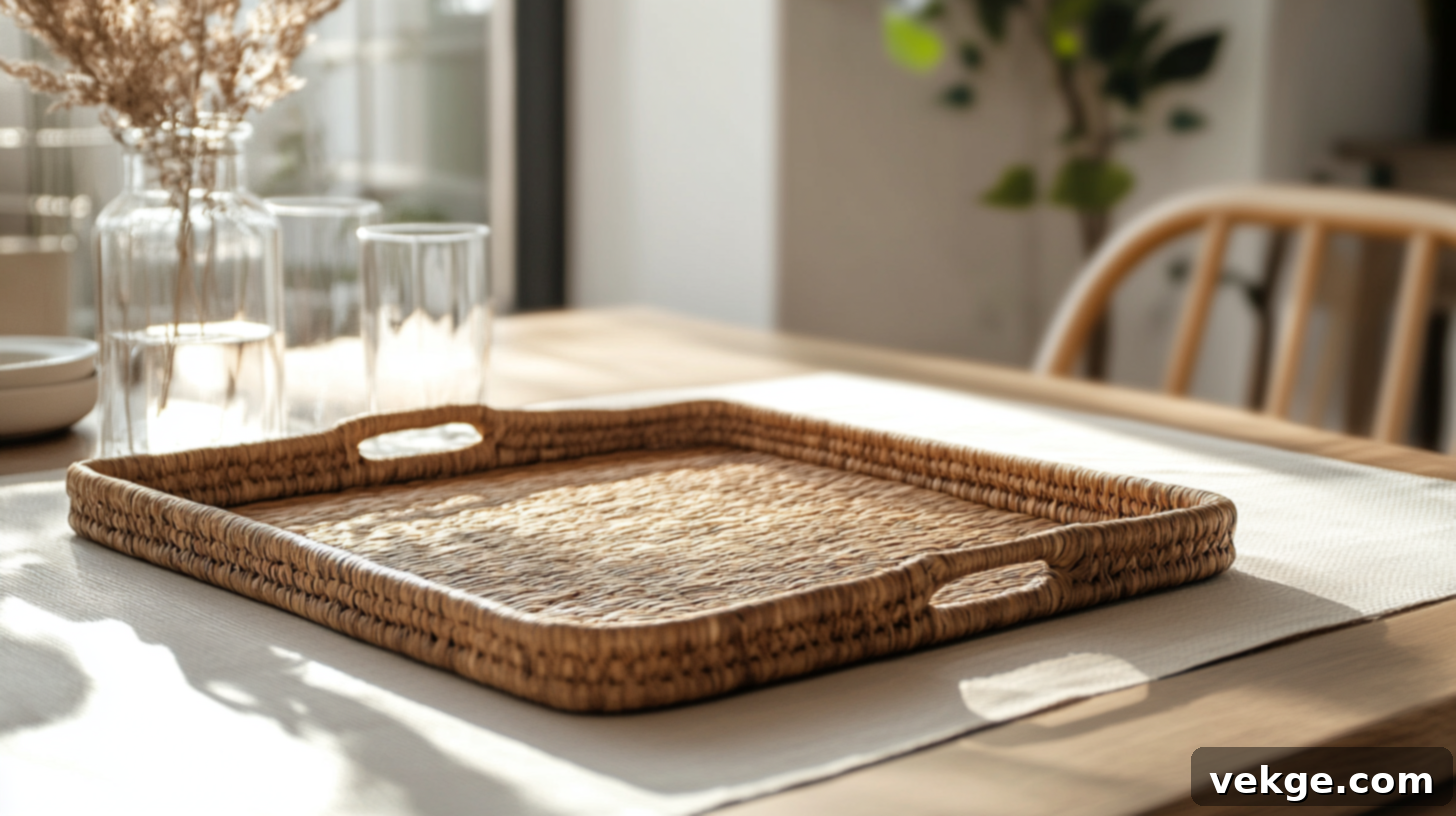
Incorporating natural textures like rattan, jute, bamboo, or unfinished wood can profoundly soften a dining room’s aesthetic and make it feel more grounded and inviting. These materials add an organic, tactile dimension that complements a wide range of styles, from bohemian to modern farmhouse. You might introduce woven placemats, a small decorative tray made of rattan, or a beautifully crafted wooden bowl to your table. These natural elements blend effortlessly with most color palettes and are excellent for adding warmth and character to a space that might otherwise feel too flat, cold, or sterile.
16. Try a Simple Everyday Centerpiece
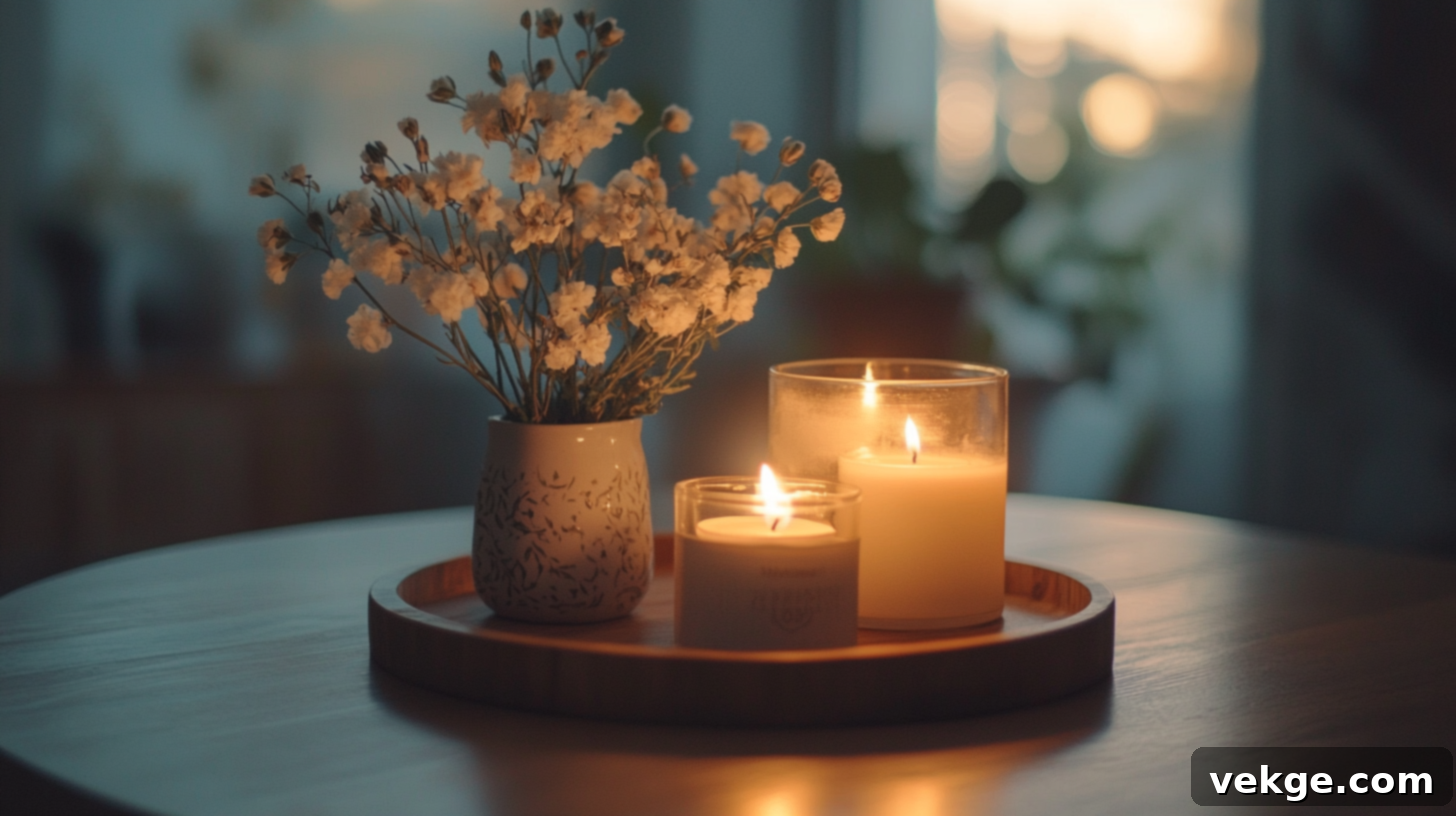
An effective centerpiece doesn’t need to be grand, elaborate, or reserved solely for special occasions. A thoughtfully arranged simple centerpiece can make your dining room feel consistently polished and inviting, even on regular days. Consider a small vase of fresh or faux flowers, a cluster of elegant candles (perhaps of varying heights), or a stylish tray holding a few curated decorative items. Crucially, keep the centerpiece low enough to ensure clear sightlines across the table, allowing for unobstructed conversation during meals. This small but significant detail ensures your dining room always looks well-appointed, ready for spontaneous gatherings or quiet family dinners.
17. Use Layered Place Settings for Added Impact
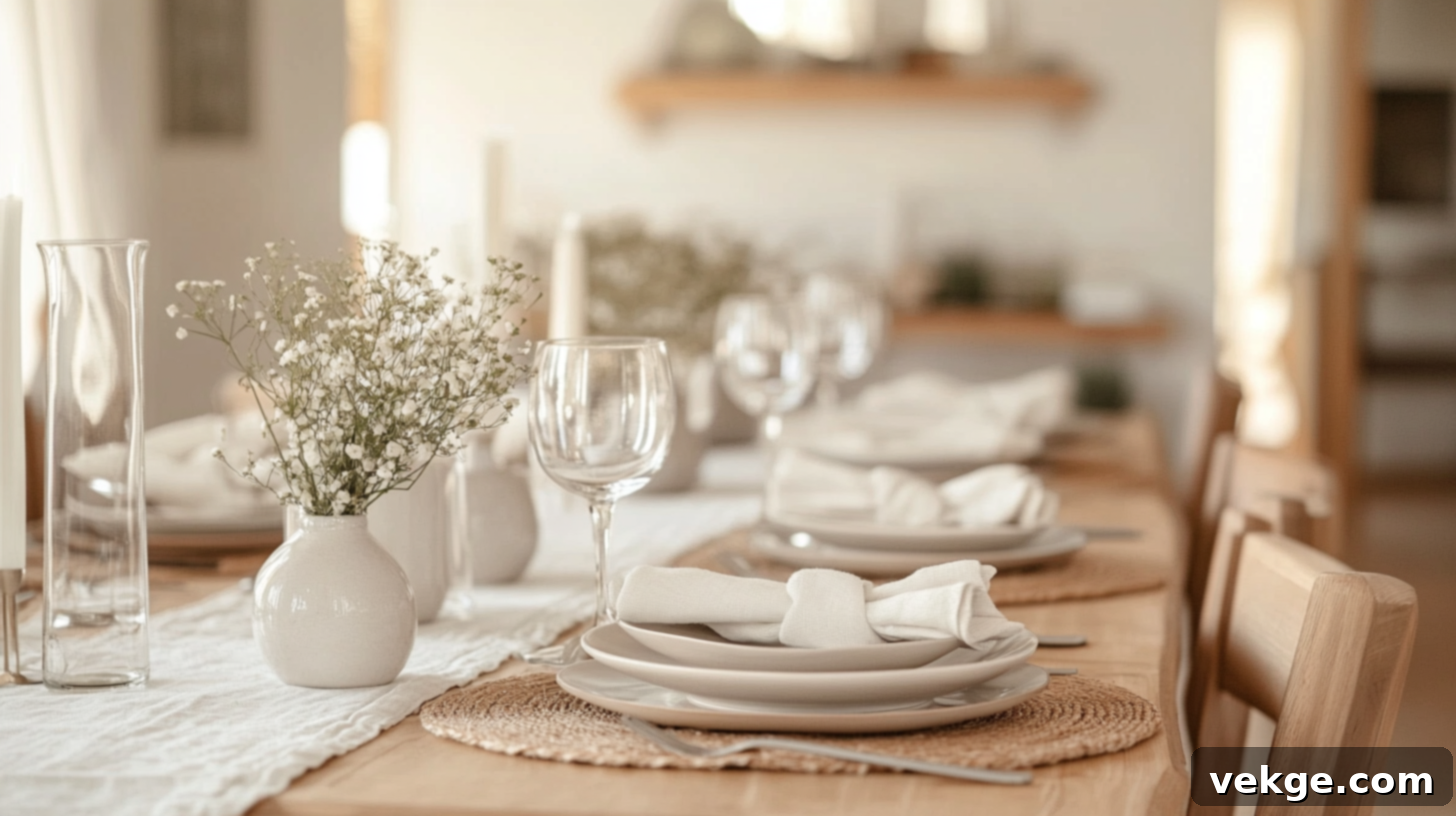
Elevating your table setting with layers can make every meal, even a simple weekday dinner, feel like a special occasion. Begin with a charger plate or a large base plate, then add a smaller dinner plate or bowl on top. A neatly folded fabric napkin tucked between the plates or placed artfully on top adds another layer of texture and color. Complete the look with appropriate flatware on either side of the setting. This straightforward technique instantly adds depth, sophistication, and a sense of occasion to your table, requiring minimal effort for maximum aesthetic reward.
18. Incorporate Neutral Fabric Napkins or Runners
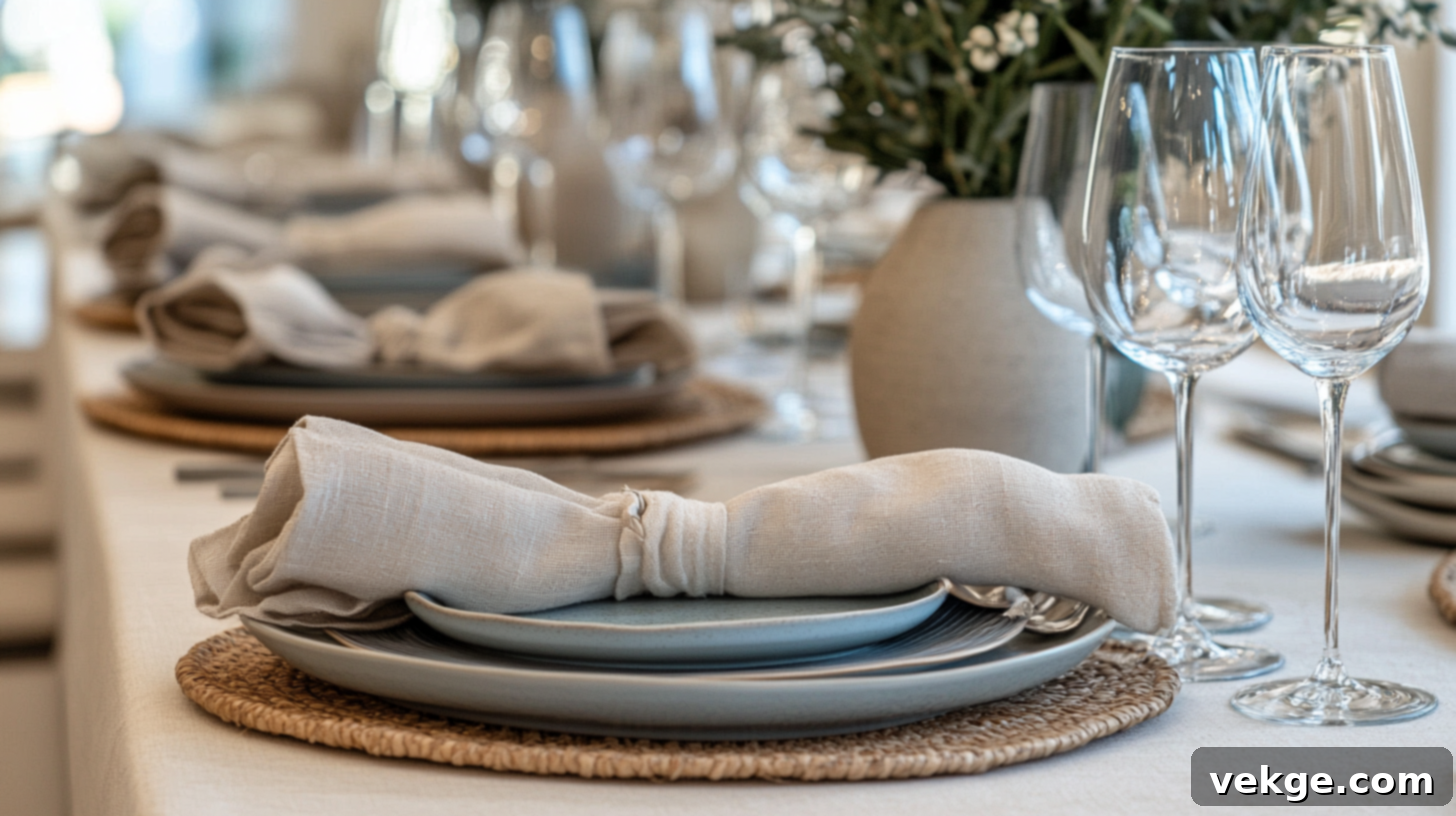
Switching from disposable paper napkins to reusable cloth napkins and adding a fabric runner is an incredibly easy yet effective way to make your dining table appear more refined and thoughtfully styled. Fabric textiles introduce softness, texture, and a touch of elegance. They are also an eco-friendly choice, being washable and reusable. Select colors that complement your existing dishes or easily change them out with the seasons to refresh your look. A runner down the center of the table provides a soft visual anchor and works beautifully even when you’re not utilizing a full place setting, enhancing the table’s everyday appeal.
19. Soft Neutrals for a Relaxing and Clean Feel

Embracing a palette of soft neutral shades such as creamy off-whites, warm beiges, or gentle grays can transform your dining room into a serene, calm, and remarkably clean-feeling space. These versatile colors create an understated elegance that harmonizes effortlessly with both light and dark furniture, providing an adaptable foundation for your decor. Neutrals offer immense flexibility, allowing you to easily refresh your accessories and decorative accents over time without having to repaint. Utilize them on walls, curtains, or larger furniture pieces if you desire a look that consistently feels fresh, sophisticated, and endlessly simple.
20. Jewel Tones for Drama and Opulence
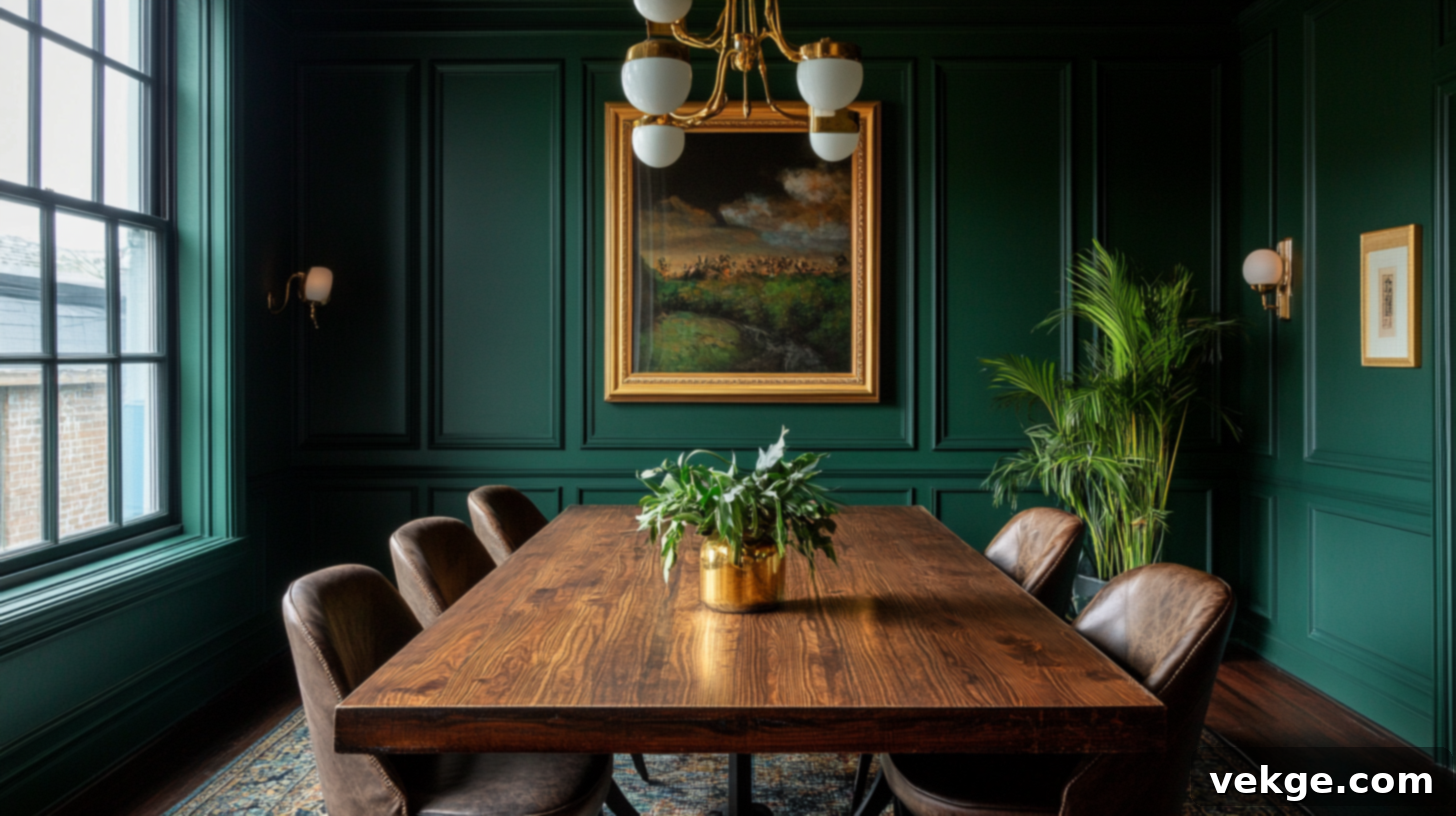
If your vision for the dining room leans towards bold, luxurious, and opulent, incorporating rich jewel tones is an excellent strategy. Shades like deep sapphire blue, vibrant emerald green, regal burgundy, or shimmering amethyst can infuse your space with an immediate sense of drama and sophistication. These powerful colors work wonderfully as an accent wall, on the upholstery of dining chairs, or in striking curtain choices. Since jewel tones possess such inherent strength, you can maintain simplicity in the rest of the room’s decor. Even small touches in these rich shades can profoundly alter the mood, adding energy and depth without feeling overwhelming.
21. Warm Earthy Shades for Comfort and Grounding
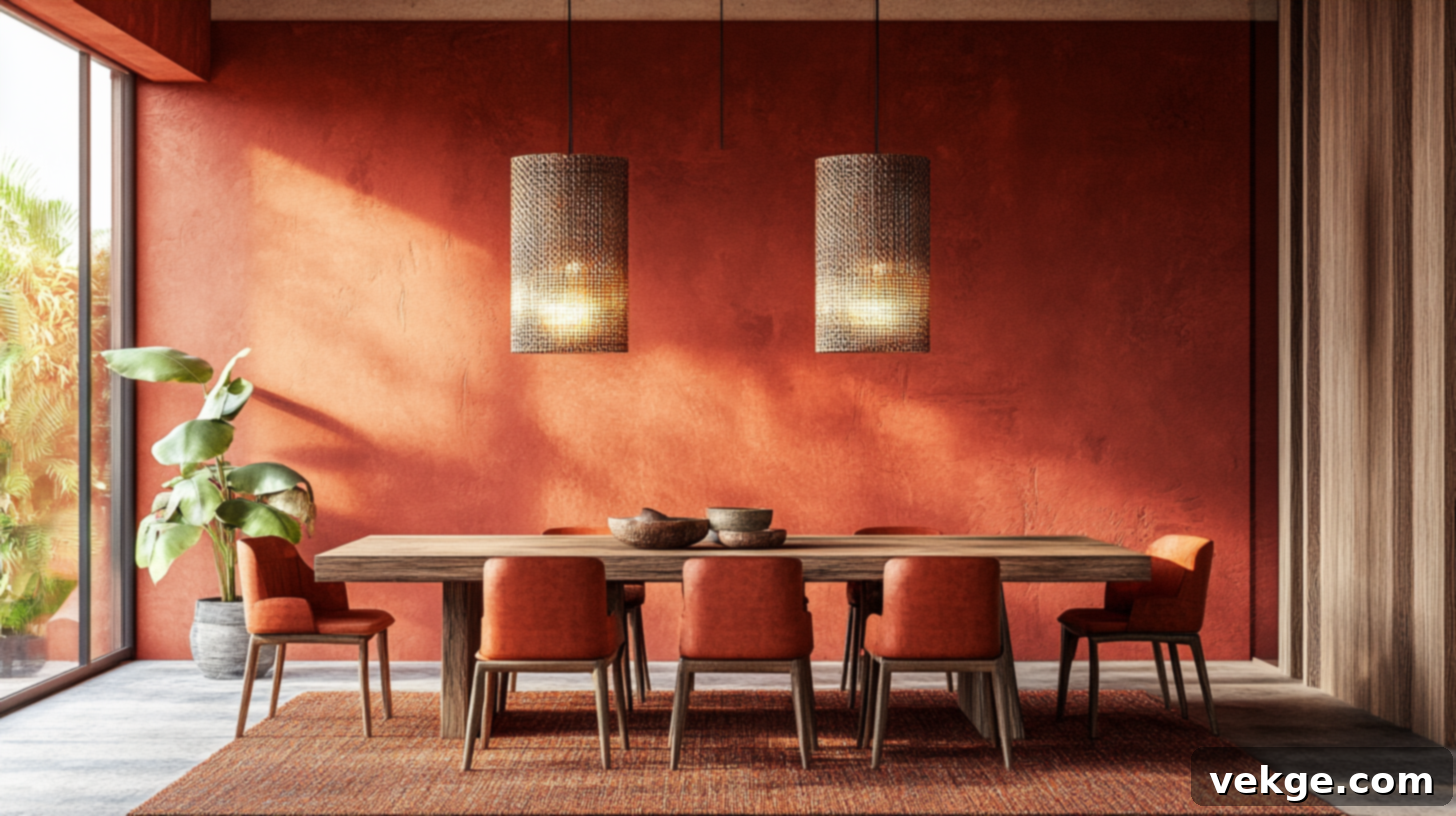
Colors inspired by nature, such as warm rust, inviting terracotta, rich olive green, or comforting sandy brown, can imbue your dining space with an undeniable sense of coziness and grounded serenity. These earthy tones pair beautifully with natural wood furniture, organic fabrics like linen, and soft, diffused lighting, creating a harmonious and tranquil environment. Consider integrating these shades through cushions, artwork, pottery, or carefully chosen place settings. Earthy palettes foster a soft, welcoming atmosphere that feels effortless to live in, making them perfect for both quiet, reflective dinners and lively, friendly gatherings.
22. Update Your Curtains or Blinds for a Fresh Look
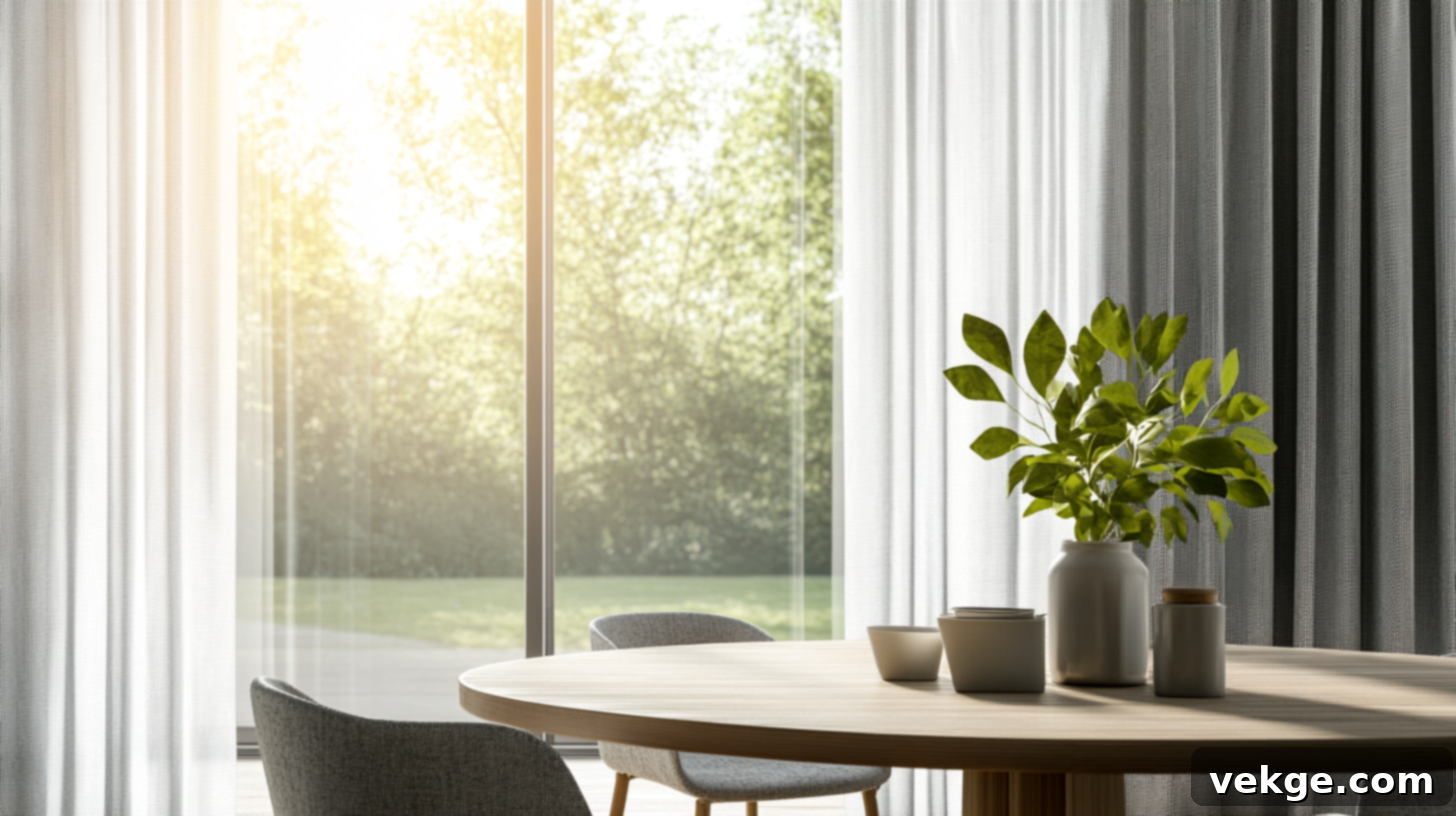
Window treatments hold far more decorative power than many people realize. They significantly impact the room’s light, privacy, and overall aesthetic. Swapping out heavy, dark curtains for lighter, more airy fabrics can instantly brighten the entire space, making it feel more open and fresh. If privacy is a key concern, opt for soft, translucent shades or blinds that still allow a gentle diffusion of natural light. Introducing new patterns or colors through your curtains can also serve as a cohesive element, expertly tying the entire room’s design together. This single change can make your dining area feel wonderfully refreshed without having to rearrange or replace any other furniture.
23. Swap Out Drawer Pulls or Hardware for a Quick Refresh

Don’t underestimate the transformative power of small details. Changing the knobs, pulls, or handles on a buffet, sideboard, hutch, or any built-in storage unit can give your existing furniture an entirely new and updated appearance. Explore hardware that complements your desired aesthetic: sleek brushed metal for a modern, clean look; warm brass for a touch of elegance; or rustic wood for a more relaxed, farmhouse feel. This minor update is typically a quick and easy DIY project that can be completed in minutes, yet it significantly contributes to making the room feel more thoughtfully designed and polished.
24. Keep It Clutter-Free with Smart Storage Solutions
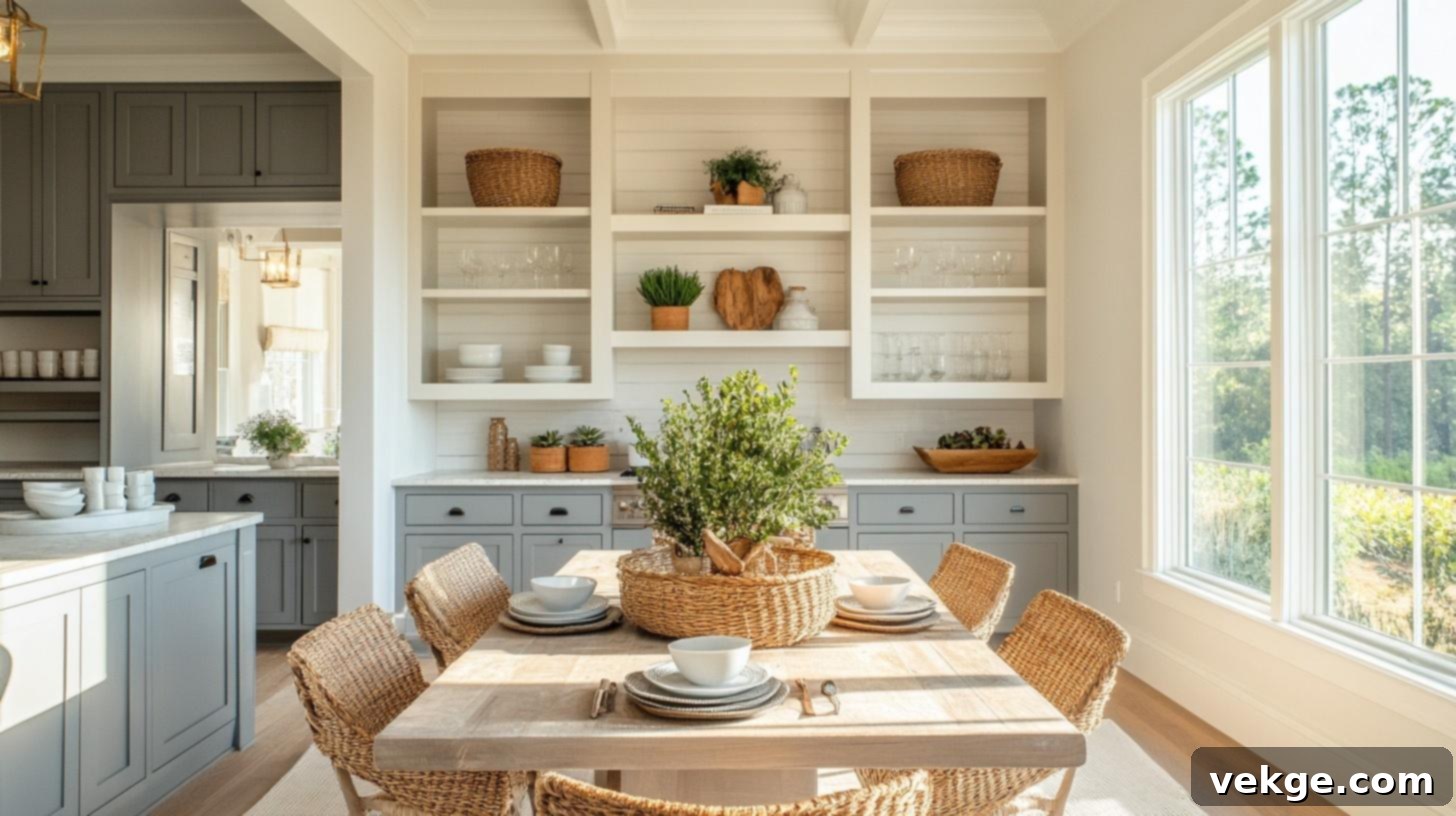
A tidy and organized dining room inherently feels more open, spacious, and welcoming. Implementing smart storage solutions is key to maintaining this serene atmosphere. Integrate stylish baskets, decorative trays, or elegant small cabinets to discreetly store items like extra napkins, candles, serving utensils, or place settings. Utilize open shelving to display only a curated selection of items you frequently use or genuinely love, rather than a collection of unnecessary clutter. When every item has its designated place, it becomes effortlessly easier to keep surfaces clear and the space inviting. Clean, uncluttered surfaces visually expand the room, making it feel larger and more serene, even if the physical dimensions are modest.
Common Mistakes to Avoid During Your Dining Room Makeover
Even with the best intentions and simple changes, a makeover can sometimes go awry if fundamental design principles are overlooked. Being aware of these common pitfalls can help ensure your dining room transformation is smooth, successful, and stress-free.
- Choosing Furniture That’s Too Large for the Space: Over-sized tables, chairs, or sideboards can quickly make a room feel cramped and obstruct natural movement. Always measure your space carefully and consider furniture that offers visual lightness.
- Not Adding Enough or the Right Kind of Lighting: Relying solely on a single overhead light can create a flat, uninviting atmosphere. Layering different types of lighting (overhead, task, ambient) is crucial for a versatile and cozy dining room.
- Mixing Too Many Styles That Don’t Work Together: While an eclectic look can be charming, indiscriminately combining too many disparate styles can result in a chaotic and disjointed space. Aim for a cohesive theme or a harmonious blend of 2-3 styles.
- Ignoring How People Will Move Around the Table: Ensure there’s ample space for chairs to be pulled out and for people to walk comfortably around the table. A minimum of 36 inches (about 90 cm) from the table edge to the nearest wall or furniture is a good rule of thumb.
- Forgetting to Measure Before Buying New Items: This is a classic mistake. Always measure doorways, hallways, and the exact spot where new furniture will go to avoid costly returns or items that simply don’t fit.
- Leaving Walls Completely Bare or Overly Crowded: Bare walls can feel sterile, while too much art or decor can create visual clutter. Strive for a balanced approach, with thoughtful placements that enhance, rather than overwhelm, the space.
Conclusion: Your Dream Dining Room Awaits
Embarking on a dining room makeover doesn’t require extensive renovations or a substantial financial outlay to make a profound difference. With just a few thoughtful and strategic changes, you have the power to create a space that feels wonderfully fresh, invitingly cozy, and deeply reflective of your personal style and preferences.
Take a moment to consider what truly matters most to you in your dining room—whether it’s fostering intimate conversations, hosting memorable celebrations, or simply enjoying quiet, beautiful meals. Then, select two or three ideas from this comprehensive list that resonate most deeply with your vision and current budget. I assure you that even the smallest, most manageable steps can lead to remarkable transformations and significant positive changes in your home over time.
The most important principle is to choose what genuinely works best for your specific space, your lifestyle, and how you live every single day. Keep the process simple, avoid the temptation to rush, and enjoy the creative journey of making your dining room a place where memories are made. Your dream dining space is entirely within reach.
If these makeover tips have proven helpful and inspiring, I encourage you to explore my other blogs for a wealth of additional home improvement and interior design advice. You’ll discover countless ways to enhance every room of your home, making each space feel perfectly right for you, one intentional update at a time.
Frequently Asked Questions About Dining Room Makeovers
How long does a dining room makeover typically take?
A basic dining room makeover focusing on decor, textiles, and minor updates can be completed in as little as 1–2 days. Larger updates, such as painting the entire room or replacing significant furniture pieces, might extend the project to a week, depending on your schedule and the complexity of the tasks.
What is the most budget-friendly way to upgrade a dining room?
The cheapest yet most effective ways to upgrade a dining room often involve paint, updated lighting fixtures (even just new bulbs or a different shade), and fresh table decor. These low-cost changes can dramatically improve the room’s aesthetic and mood without requiring expensive furniture replacements or major structural alterations.
Should a dining room always match the kitchen?
While your dining room and kitchen don’t need to be an exact match, it’s generally a good idea for them to complement each other. Using similar color palettes, complementary materials, or a consistent design style helps create a harmonious flow between both spaces, which is particularly important in open-plan living areas where the rooms are visually connected.
